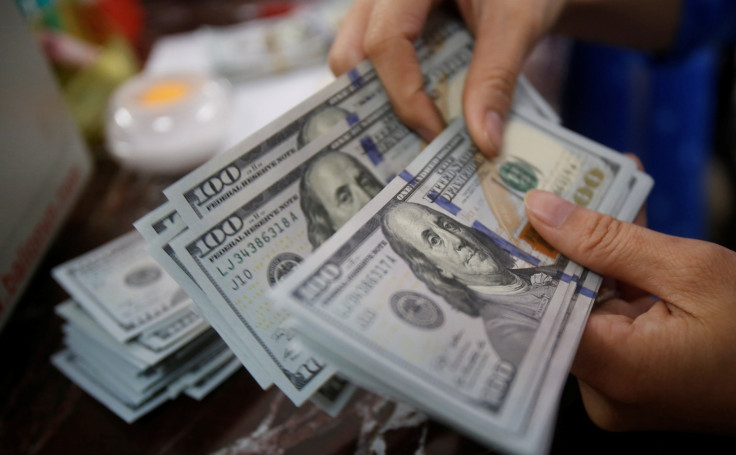Dollar Consolidates After Posting A Third Week Of Gains

The dollar got off to a steady start against a basket of major currencies on Monday, remaining within striking distance of a two-month peak after markets last week moved to price in a greater chance of an imminent hike in U.S. interest rates.
The dollar index was last at 95.324, little changed from where it closed in New York on Friday and not far from Thursday's high of 95.520. It rose 0.8 percent last week, climbing for a third week.
Emboldening dollar bulls, recent comments from Federal Reserve officials, as well as minutes of the Fed's April meeting, have convinced many analysts and investors that a rate hike in June or July is a real possibility.
More Fed officials are due to speak later on Monday including James Bullard, John Williams and Patrick Harker. Last Thursday, New York Federal Reserve President William Dudley said the U.S. economy could be strong enough to warrant an interest rate increase in June or July.
"Market odds of a June rate hike ended the week at around 30 percent, up from 4 percent a week ago. That is a significant repricing," analysts at ANZ wrote in a note to clients.
"We continue to see June as very much a 'live' meeting."
With the dollar in favor, investors gave the euro a wide berth. The common currency last stood at $1.1218, struggling to pull away from a near two-month trough of $1.1180 plumbed on Thursday.
The yen stayed on the defensive after underperforming both the greenback and euro on Friday as a rally on Wall Street dampened demand for the safe-haven currency.
The dollar fetched 110.16 yen, having reached a three-week high of 110.59 on Friday. The common currency was at 123.60 yen, drifting toward the top end of its 122.625-124.650 range.
Investors shrugged off a Group of 7 finance ministers' meeting, which concluded on Saturday with the United States warning Japan against intervening to weaken the yen, displaying a well-known rift between the two countries on currency intervention.
The resurgent dollar has taken a heavy toll on commodity currencies, none more so than the Australian dollar, which was further weighed by expectations of cuts in interest rates at home.
The Aussie was last at $0.7229, having been as low as $0.7175 last week, a trough last seen more than two months ago.
Apart from the Fed speakers, investors will also be keeping an eye on early readings of this month's manufacturing activity in major economies including Japan, Germany and the United States.
© Copyright Thomson Reuters {{Year}}. All rights reserved.





















